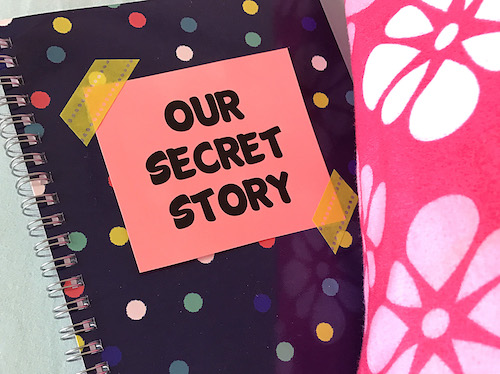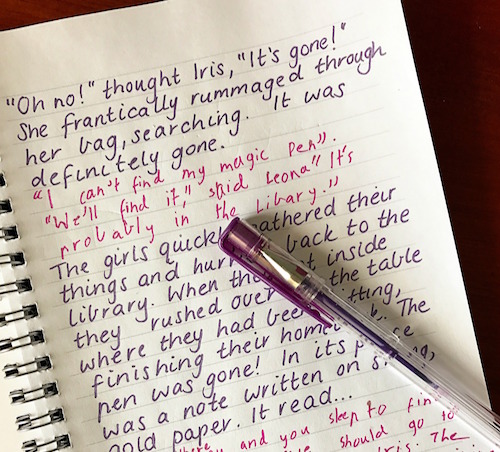Here's a simple activity that will get your child enthused about reading and writing: Grab a blank notebook and write the first three (gripping!) sentences of a story on the first page. Then, hide the notebook under your child’s pillow with an invitation for them to continue the story, and then hide it again for you.
From the moment my eight-year-old daughter first discovered our secret story notebook, she was captivated! The premise is simple, and based on the idea of a relay story, where two people take turns to write alternating paragraphs of one story. In this case, there’s an extra little spot of magic (and a good dose of motivation) in the form of a secret surprise, when discovering it is your turn to write.
What You'll Do

To get started, grab a notebook and label it "Our Secret Story." Include an invitation to write and an explanation of the process on the front cover of the book. You might say something like;
Dear XX,
Your mission, should you choose to accept it, is to help me write an amazingly exciting story — we’ll do it together. How? Each time you find this special notebook, you will know that it is your turn to add to the story and continue the adventure. You can write whatever you like and as much as you like. The only rule is this: You must add at least three sentences each time it’s your turn. Once you’re done, hide the notebook again for me and together we will get this adventure written!
Love,
XX

Begin the story by writing the first three sentences of the adventure on the first page of the book. Think about your child’s interests and try to capture his attention by making the story introduction extra intriguing. You could start with a surprise, a thrilling event, an element of danger, or by describing the setting in detail. You can also begin they way I did, with the main character speaking.
Then, it is simply a matter of hiding the book under your child’s pillow or somewhere else you think he might discover it at an unexpected moment. With time, this activity could even become a valued part of your daily routine — adding a little more writing to the day just before bedtime or first thing in the morning.
Your child’s responses can help you to understand his grasp of writing conventions such as punctuation, grammar, and spelling. Plus, your entries will provide a wonderful model of these same conventions in use. You’ll also be strengthening reading skills as your child reads back through the story shared so far, each time it is his turn to write. Be careful not to get too caught up in correcting his work though, as the activity’s ultimtate objective is to light a fire under your child’s imagination and get him writing.
What are your favorite ways to get your child engaged in writing? Share your strategies on the Scholastic Parents Facebook page.
Featured Photo Credit © JenniferPhotographyImaging/iStockphoto
